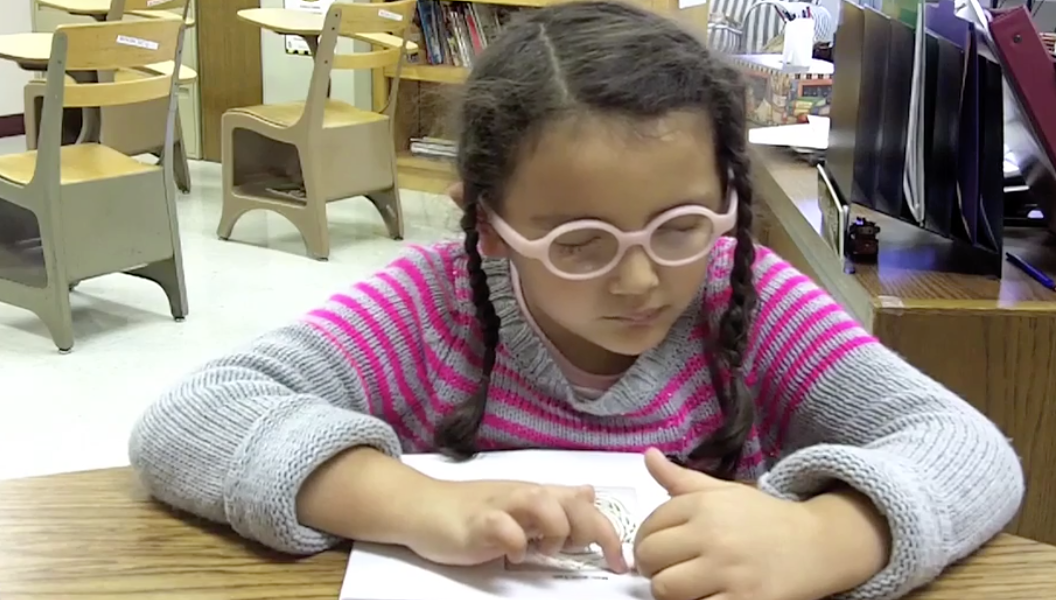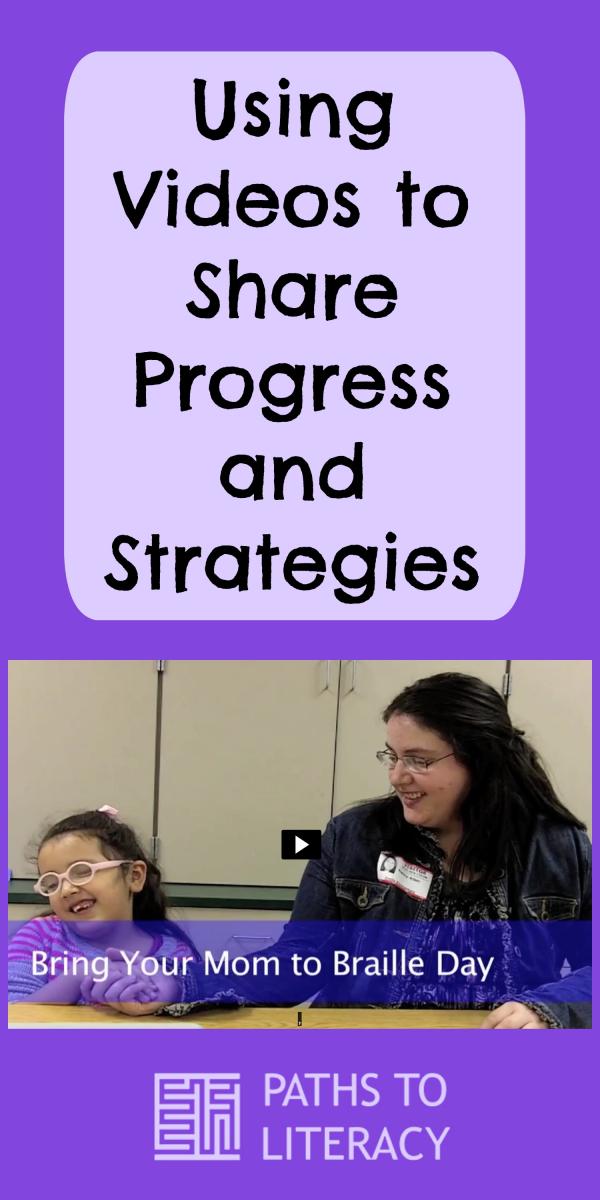Using Videos to Share Progress and Strategies
 Pictures and videos are an amazing way to share progress, as well as activities, behavioral concerns, strategies and more with parents and teachers. I have found that pictures and videos help parents know what we are doing with their child. Typically when they come to the ARD (Texas' version of an IEP meeting), they are asked to agree to our IEP objectives and service time, which is frequently a pull-out lesson. All they know is that the TVI and their child are alone in a room away from their peers and classroom teachers. Lots of questions go through their minds: What are they doing? What do those lessons look like? Is my child behaving? Does my child like the lessons? And their questions go on. By sharing the photos and videos, they become part of the lesson as an observer.
Pictures and videos are an amazing way to share progress, as well as activities, behavioral concerns, strategies and more with parents and teachers. I have found that pictures and videos help parents know what we are doing with their child. Typically when they come to the ARD (Texas' version of an IEP meeting), they are asked to agree to our IEP objectives and service time, which is frequently a pull-out lesson. All they know is that the TVI and their child are alone in a room away from their peers and classroom teachers. Lots of questions go through their minds: What are they doing? What do those lessons look like? Is my child behaving? Does my child like the lessons? And their questions go on. By sharing the photos and videos, they become part of the lesson as an observer.
Inviting Parents to Observe Lessons
I like to invite the parent to lessons, both so that they can see what their children are capable of doing, and also to carry over with specific strategies at home. This is a great way to see in person what the lessons look like from beginning to end. I often make a second set of materials for the parents to have at home. This enables them to see their child as an expert and start asking them for help or to check their work. My students have a tendency to correct their parents' tracking skills, and letter, number or word recognition. I have observed parents sometimes "cheating" off their child and I enjoy telling the student that their momor dad "is looking over your shoulder".
Bring Your Mom to Braille Day
The video below shows a 6-year-old dual media student at our first ever "Bring Your Mom to Braille Lesson Day".
Videos Helps Students See How Far They Have Come
The videos can be empowering to both parent and student. They cab help parents to begin to worry less about their child's abilities and prompt them to start to forget the "dis" in disability. The students enjoy looking at their own productivity, and they always get a kick out of watching their parents. I also like to show the videos to the students after some time has gone by. For instance, one student I have who is now in the 4th grade loved seeing a video of herself from when she was in the 1st grade. This can really be a boost to their confidence and self-esteem, when they recognize just how far they have come. The video below shows this student, who is a dual media (print and braille) reader, reading her first braille book.
Using Videos to Analyze My Teaching
An added bonus of videos is that I can use them to analyze myself. I ask myself questions such as: Am I over prompting? Could I improve verbiage? Am I not giving enough wait time or am I giving too much? And the list goes on from there. While I don't like to hear or see myself in videos, they are a powerful tool that helps me to improve my skills as a teacher. You can learn a lot by watching the videos. You'll see things you didn't notice during your lesson that your student may have done or said, as well as observing yourself teaching. It's a win-win for all!
Promoting Self-Determination
Videos can also be used for the students to document their own progress. They can tell about what they have learned and what they know how to do, as well as what they enjoy.
The video below shows photos of Minnie doing different activities, with her voice narrating what she is doing.
I make simple snacks. I read braille. I almost can load the paper. I love writing on the braille writer. I love making Christmas trees. I love playing on the iPad.

